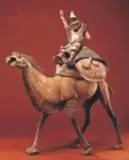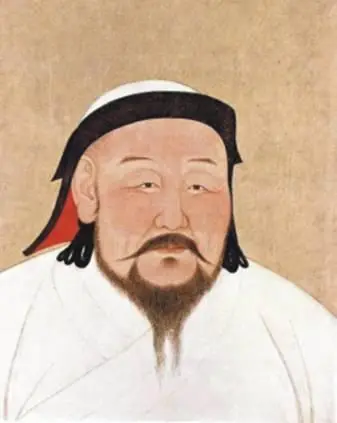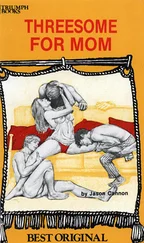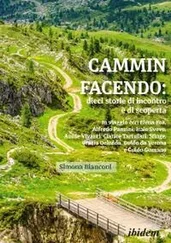Simon Foster - CHINA's Three Gorges & Xi'an
Здесь есть возможность читать онлайн «Simon Foster - CHINA's Three Gorges & Xi'an» весь текст электронной книги совершенно бесплатно (целиком полную версию без сокращений). В некоторых случаях можно слушать аудио, скачать через торрент в формате fb2 и присутствует краткое содержание. Год выпуска: 2010, Издательство: Hunter, Жанр: Старинная литература, на английском языке. Описание произведения, (предисловие) а так же отзывы посетителей доступны на портале библиотеки ЛибКат.
- Название:CHINA's Three Gorges & Xi'an
- Автор:
- Издательство:Hunter
- Жанр:
- Год:2010
- ISBN:нет данных
- Рейтинг книги:4 / 5. Голосов: 1
-
Избранное:Добавить в избранное
- Отзывы:
-
Ваша оценка:
- 80
- 1
- 2
- 3
- 4
- 5
CHINA's Three Gorges & Xi'an: краткое содержание, описание и аннотация
Предлагаем к чтению аннотацию, описание, краткое содержание или предисловие (зависит от того, что написал сам автор книги «CHINA's Three Gorges & Xi'an»). Если вы не нашли необходимую информацию о книге — напишите в комментариях, мы постараемся отыскать её.
CHINA's Three Gorges & Xi'an — читать онлайн бесплатно полную книгу (весь текст) целиком
Ниже представлен текст книги, разбитый по страницам. Система сохранения места последней прочитанной страницы, позволяет с удобством читать онлайн бесплатно книгу «CHINA's Three Gorges & Xi'an», без необходимости каждый раз заново искать на чём Вы остановились. Поставьте закладку, и сможете в любой момент перейти на страницу, на которой закончили чтение.
Интервал:
Закладка:

Arts & Religion under the Tang
After the previous fractious periods of division, the calm and prosperity of a unified China provided a springboard for the arts, particularly painting, poetry and pottery. Two of China's most famous poets to this day, Li Baiand Du Fu, wrote during the Tang and the world's first printed book was published in 868. Potterybegan to take on more color and glaze, and the tri-color techniques refined in the Tang are still in use today (see Ceramics ). Trade was fundamental to both economic success and the resultant thriving religious and artistic scene. The Silk Road and the maritime ports of Guangzhou and Yangzhou brought, not only foreign goods, but outside ideas to the country. A tolerant attitude to foreigners allowed for a more cosmopolitan China; other religions such as Islamand Nestorianismestablished themselves, but neither prospered like Buddhism. As imperial patronage of Buddhism increased, it was represented in cave art, which reached its peak in the Tang, although much was later destroyed in periods of religious repression. Notable Buddhist cave art from the Tang remains today at Dunhuang in Gansu , Longmen Grottoes in Shandong province and at Dazuin Szechuan.
China's First Empress
Thirty years into the dynasty, a power struggle for the throne led to the naming of Taizong's (624-49) ninth son as Emperor Gaozong in 649. Only 20 years old when he came to the throne and plagued by ill health, Gaozong's power was soon controlled by his consort and former concubine, Wu Zetian, who had managed to oust the empress and take her place. When Gaozong died, she continued to rule for their weak son. A shrewd and manipulative woman, Wu finally usurped the throne in 698 AD, proclaiming the foundation of the Zhou dynastyin 698 AD, and giving China its first empress. Her relationship with Buddhism (and with Buddhist priests) has been questioned, but the royal carvings she commissioned at Longmen Grottoes in Luoyang are a testament to her short rule, which ended with her abdication in 705.
Close of the Tang
In 712, Xuanzongascended to the throne and, although he is remembered as one of the Tang's greatest emperors and his reign began gloriously, as it progressed, power was eroded. There was a military defeat by the Arabs in 751, invasions from Tibet and finally a revolt led by the Turkish general An Lushan. Although the rebellion was crushed, the power of the state was considerably weakened and Xuanzong's rule ended in 756. After Xuanzong, imperial control was further diluted by internal power struggles and several emperors were poisoned by court eunuchs. Eunuchs continued to exert influence over court proceedings and a string of weak emperors allowed them to chip away at the imperial power base. It became clear that the dynasty had lost the Mandate of Heaven and, in 907, the last of the Tang emperors abdicated.
Song Dynasty (960-1279)
In spite of a 50-year hiatus from unified rule known as the Five Dynasties(907-960), advances made during the Tang had laid the way for economic development. When Zhao Kuangyin (Emperor Taizu) re-united the country and founded the Song dynasty in 960, things quickly picked up from where the Tang had left off. Commerce flourished from the capital at Kaifengand the great cities grew larger, while new ones sprung up all over the south. Agricultural and industrial success opened the doors for artistic developments and the Song is remembered as a time of great poetry, pottery and landscape painting - Su Dongpo (see Poetry ), one of China's greatest poets, lived during the Song. But art doesn't maintain empires and, in spite of the invention of gunpowder and the magnetic compass, the Song's failure to achieve military dominance resulted in the loss of their capital in 1126 to the Jurchen, a sinicized Manchurian tribe which founded its own dynasty, the Jin(1115-1234). Forced to re-locate to Hangzhouand burdened by humiliating and considerable indemnity payments to their new neighbors, the dynasty became known as the Southern Song(1126-1279). They blossomed culturally, but failed politically and militarily.
Yue Fei
The Song dynasty certainly isn't known for its military leadership but Yue Fei(1103-42), a young man who was instrumental in subduing rebel bands after the Song were forced south to Hangzhou, emerged as a great hero from this time. He campaigned against the Jurchen in the north but his efforts were nullified by a settlement that made the Southern Song vassals of the Jurchen Jin dynasty. Yue Fei was executed as a supposed traitor, but his determined patriotism won him a place in the hearts of the Chinese people; 20 years later he was recognized as a national hero and reburied in a grand tomb in Hangzhou.
Rise of the Mongols
Military heroes like Yue Fei were in the minority though, and the Song's preoccupation with the arts contributed to their demise. While the Song is remembered as one of China's great dynasties, it never exerted the military dominance over East Asia that had been achieved under the Han and Tang and it was under constant threat of attack from the north. Even after losing Kaifeng and northern China to the Jurchen, the Song still paid little heed to the dangers of outside invasion. The Mongols, united under the forceful leadership of Genghis Khanat the start of the 13th century, had become increasingly powerful and penetrated deep into Chinese territory, taking Beijing in 1215. In 1279 Kublai Khan, Genghis Khan's grandson, founded the Yuan dynasty.
Yuan Dynasty (1279-1368)
The military might of Genghis Khan's marauding Mongolian tribes enabled him to seize control of a vast swathe of land from China to Europe. By the latter part of the 13th century this subsumed the northern Jurchen Jin dynasty and then the Southern Song, making China just another Mongol outpost with Genghis' grandson, Kublai Khan, at its head. The Mongols' nomadic traditions were ill-suited to static urban control and they soon adopted the Chinese style of rule, establishing their capital, Dadu, on the site of modern Beijing. Chinese influences were welcomed and rejected to differing extents under the various Yuan leaders, but ultimately the conquerors were changed more than the conquered. However, the Mongol tradition of elected leaders was harder to erase and ran contrary to the Chinese concept of dynastic succession. This remained a problem throughout the Yuan dynasty - each time an emperor died there was an ensuing power struggle. Nevertheless the Yuan was not without its accomplishments and trade across Mongolian Central Asia boomed, bringing a wealth of goods, influences and outside expertise to China

Kublai Khan
Social Division & Downfall
The lavish court lifestyle of the Yuan, as described by Marco Poloduring his purported stay, didn't sit well with nomadic traditions and gradually eroded the military might of the Mongols. Fierce resistance and typhoons contributed to military failure in Japan, while little more success was met in the unfamiliar terrain of Southeast Asia.
The reasons for the downfall of the Yuan dynasty are debatable and are manifold, but Kublai Khan's division of subjects into four racial groups certainly did little to endear him to the Chinese majority. Mongols were at the top of the ladder, followed by Central Asians and Westerners; next came the Han Chinese and, on the bottom rung, the southern Chinese. Within this structure, Muslims were granted special privileges and, in the Buddhist world, Tibetans held the key posts. This alienated and angered the Chinese population. Secret Buddhist societies, like the White Lotusand Red Turbans, emerged and plotted insurrection, which was met with oppression at the hands of Kublai's inept successors, but this only led to more sustained resistance. Finally a full-scale uprising under the monk turned rebel leader, Zhu Yuanzhang, usurped the throne from the child emperor in 1368 and instilled the Ming dynasty.
Читать дальшеИнтервал:
Закладка:
Похожие книги на «CHINA's Three Gorges & Xi'an»
Представляем Вашему вниманию похожие книги на «CHINA's Three Gorges & Xi'an» списком для выбора. Мы отобрали схожую по названию и смыслу литературу в надежде предоставить читателям больше вариантов отыскать новые, интересные, ещё непрочитанные произведения.
Обсуждение, отзывы о книге «CHINA's Three Gorges & Xi'an» и просто собственные мнения читателей. Оставьте ваши комментарии, напишите, что Вы думаете о произведении, его смысле или главных героях. Укажите что конкретно понравилось, а что нет, и почему Вы так считаете.












